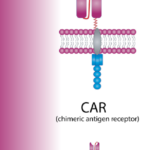Healthcare professionals also benefit from the app because this tool provides a quick introduction to key treatment concepts. Switching a patient’s therapy—especially to a novel, data-limited modality, such as CAR T cell therapy—is a significant decision for any doctor, one that should not be taken lightly, and it benefits from patients and physicians being on the same page with regard to potential risks and benefits.
We also see value for caregivers, family members and clinical staff, with the app helping ensure that everyone involved is well informed. Lastly, students at the high school level and beyond who are interested in these medical science concepts can use the app to familiarize themselves with emerging immunological therapies in the field of rheumatology.
TR: Are there other VR apps for patient education in rheumatology or medicine?
NK: We initially developed a single-player, VR version from our social VR [version], allowing individuals to navigate the experience independently. Currently, we are collaborating with experts from Universitätsklinikum Erlangen to extend our work beyond lupus, including myositis and systemic sclerosis, both of which are autoimmune conditions that have been successfully treated with CAR T therapy. [Because] many models, animations and interactions are already in place, adapting to new diseases is efficient and cost effective.
Another project focuses on rheumatoid arthritis, [for which] we are developing an interactive mobile game with augmented reality and mixed reality elements to illustrate inflammatory bone disorders. By way of background, augmented reality is a technology that superimposes a computer-generated image on a user’s view of the real world, thereby providing a composite view. Mixed reality is a medium that consists of immersive computer-generated environments in which elements of a physical and virtual space are combined.
We believe that such novel approaches will help expand the scope and utility of our applications.
‘Our personal experience reinforced the need for better patient education. … When facing a severe disease, understanding all treatment options is vital for making the best decisions.’ —Mr. Kandera
TR: What advantages does VR offer for patient education, compared with traditional methods?
NK: This therapy is new and complex, combining immunology and oncology. Understanding treatment mechanisms, risks and side effects—such as cytokine storm—requires a deep knowledge base that is challenging for doctors to convey within the usual time constraints of a busy day.
VR provides an accessible, immersive learning environment, guiding patients through the treatment process step by step. It allows doctors to explain complex topics more effectively and answer questions with the help of contextualization. Additionally, it ensures consistent, high-quality medical education, reducing misunderstandings and increasing patient confidence.



